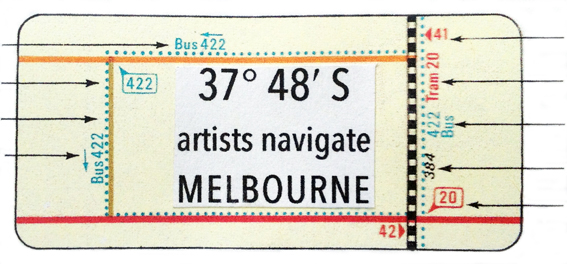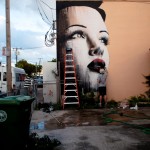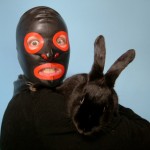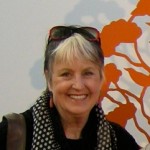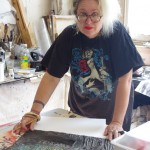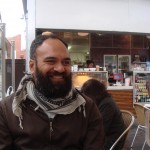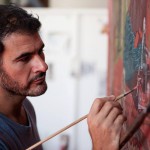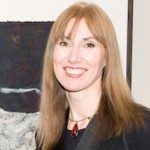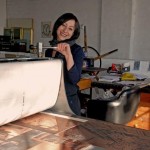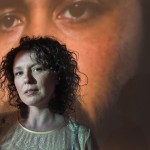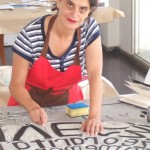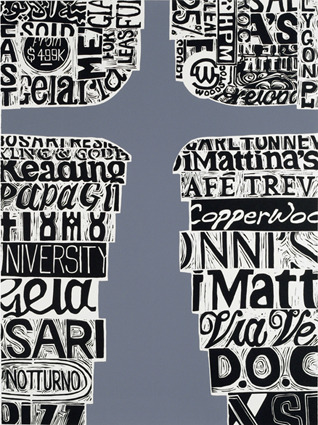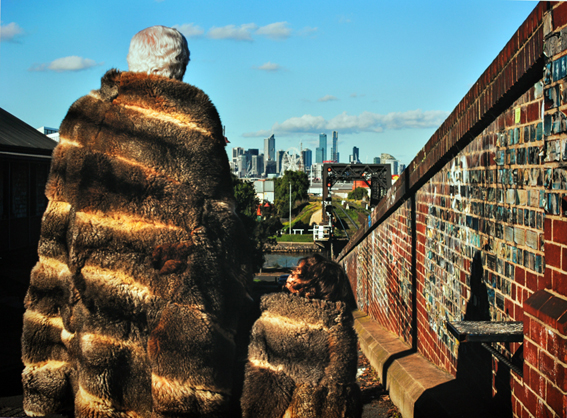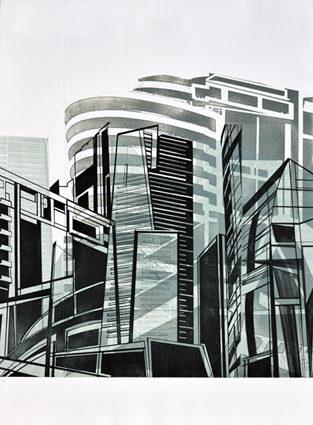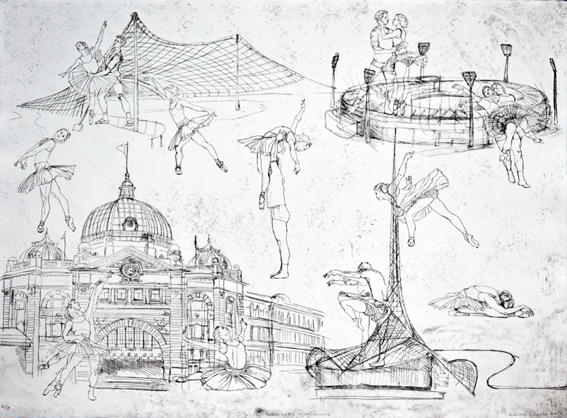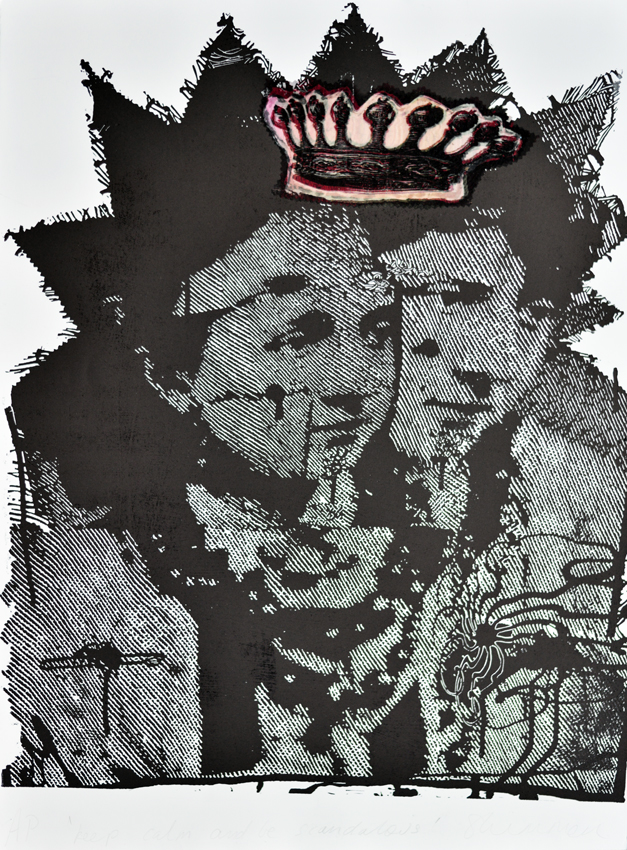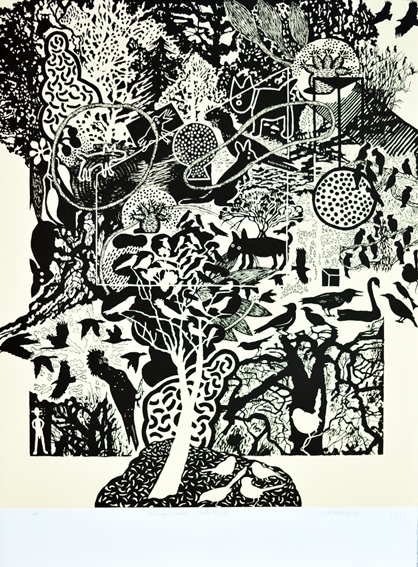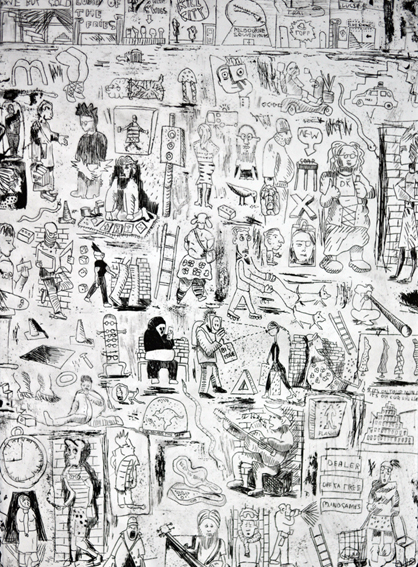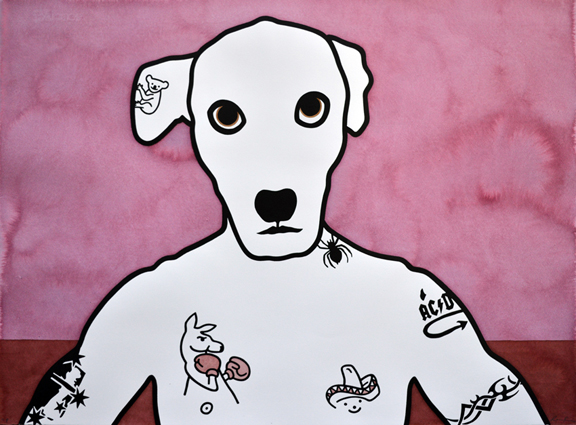Curated by Dianna Gold and Carmel Wallace, 37° 48′ S: artists navigate MELBOURNE is an exciting and provocative visual art project exploring the cultural diversity of contemporary Australia as exemplified by life in Melbourne. Street-art practices and traditional printmaking techniques are on an equal footing as twelve diverse, Melbourne artists consider the cultural, natural and built environments of their city. The limited edition suite of prints created by these artists was previewed in Melbourne before journeying to New York where it joined a complementary body of work created by the New York Society of Etchers in response to their city. The resulting dialogue highlighted similarities, differences and crosscurrents between the two cities of Melbourne and New York. The combined exhibition was on the program of Print Week, a celebration of the art of print in New York City. It is continuing to travel . . .
View the documentary of the project by Amy Tsilemanis and Peter Corbett.
Check out project posts on Facebook: www.facebook.com/37degrees48S
37° 48′ S: artists navigate MELBOURNE exhibitions:
National Arts Club, Gramercy Park, New York, NY USA: 30 October – 8 November 2014, alongside a complementary selection of prints by NY artists, curated by Sean Corcoran, Curator at the Museum of the City of New York.
Sofitel Melbourne On Collins, Melbourne, Australia: 1 February – 1 March 2015
Galleria Gravura Brasileira, Sao Paulo, Brazil: – 17 March – 30 April 2015, alongside a complementary selection of prints by Brazilian artists, curated by Eduardo Besen, Gallery Director of Galleria Gravura Brasileira.
Warrnambool Art Gallery, Warrnambool, Australia: 16 July – 2 October 2016, alongside a complementary selection of prints by Warrnambool artists, curated by Gareth Colliton, curator at Warrnambool Art Gallery.
Portland bay Press, Portland, Victoria, Australia: 31 March – 31 May 2017, alongside a complementary selection of prints by Portland artists, curated by Trevor Smith, curator of the Glenelg Shire Cultural Collection. Check the link to an article in IMPRINT magazine about the exhibition by Trevor Smith http://imprint.org.au/printmaking/waringah/
37° 48′ S: artists navigate MELBOURNE project artists –

Chatting Up Melba: Conversations Sparked by Art A special event for the 37° 48′ S: artists navigate MELBOURNE print exhibition at the Sofitel Melbourne On Collins, 19th February 2015.
Hosted by poet / playwright / spoken word performer Nathan Curnow, with special guest conversationalists:
- Neil Stonell, Director of Grimshaw Architects and project leader for Southern Cross Station and the Seafarers Bridge at South Wharf Melbourne
- Robyn Annear, historian and author of books including ‘Bearbrass: Imagining Early Melbourne’ and ‘A City Lost and Found: Whelan the Wrecker’s Melbourne’
- Terence Murphy, Guest Relations Manager, Sofitel Melbourne On Collins.
37° 48′ S: artists navigate MELBOURNE project prints and statements –
ALL PRINTS: Printed: Melbourne Victoria Australia 2014 Edition: 30 + 3 artist proofs Print size: 56 x 76 cm Presentation box: Irwin & McLaren Bookbinders, Cremorne (Melbourne), & map supplied by Grimshaw Architects Printer: Printed by the artist unless otherwise stated.
-
ANGELA CAVALIERI Lygon Street, 2014 Screen-printing by Douglas Kirwan http://www.angelacavalieri.com I explore the art of writing in visual form where literary, religious and historical narratives eventually manifest as image. Lygon Street is based on the building, street and shop signs of one of Melbourne’s most popular and multicultural streets. It runs almost from the centre of the city through two major suburbs, Carlton and Brunswick. The journey from one end to other is diverse and has undergone many changes. From Carlton to Brunswick, Lygon Street’s layout metamorphoses dramatically with its buildings, scale and its inhabitants. The change occurs almost at The Melbourne Cemetery that covers a large portion of the street. The ‘crossroads’ depicted in the print show this division as well appearing as a gravestone head. Lygon Street has a historical and personal significance for me. Lygon Street, Carlton, was where the first migrants, mainly of Italian origin, settled during the post war years, and set up a social and cultural meeting place with bars, cafes and restaurants. The Brunswick end of Lygon Street is now dominated by the new migrants of the last twenty years and people looking for inner-city lifestyles. The older migrants are disappearing and the area is undergoing rapid redevelopment in both its architecture and culture. Over time I have observed the various histories and narratives that Lygon Street still holds. Angela Cavalieri ’14
-
BINDI COLE Murrum (Alive) 2014 Archival digital print on 300gsm cotton rag paper. Printed by Chris Pennings, JCP Studios, Melbourne. http://bindicole.blogspot.com.au Contemporary Victorian Aboriginal people experience culture and community in a place that no longer looks like home. The decimation of culture and language in Victoria is strongly felt, yet the community is thriving. If you were to ask any Melbourne suburbanite, you might think there is no Aboriginal community here—there is, it just doesn’t look the way the media presents nor does it experience life in the way it used to. As colonization continues to have a major impact on this community, every facet of life must change and become contemporary. Bindi Cole 2014
-
CARMEL WALLACE The End Of May 2014 Archival digital print on 300gsm cotton rag paper. Printed by Roger Stewart, CPL Digital, South Melbourne
the end of May gusts animate falling plane leaves / a farewell curlicue dance / through thinning air /collins street 5pm /crisp leaves crackle and crunch / beneath determined feet /melbourne in autumn / quieter walks on leafy carpet / softened by rain /and amongst fallen leaves / other seasons’ ends / rest and curl Carmel Wallace 2014
-
CAT POLJSKI Measured Fragment of the City 2014 multi plate etching & relief print on 300gsm cotton rag paper https://au.linkedin.com/in/cat-poljski-67482528 My work explores the constructed world in an attempt to move between the real and the imagined. The individual works are spatial experiments, reconstructed, referenced and cross-referenced to provide abstracted viewpoints to question notions of place and time. ‘Utopia is a powerful trope in western culture. In its simplest form, it refers to a better place, a place in which the problems that beset our current condition are transcended or resolved. Yet it also means, or at any rate suggests a pun on the ancient Greek words for ‘no place’, a place imagined but not realized, the ‘shining on the hill’ that illuminates the limitations of the world in which we actually live, the telescope that allows us to grasp the ‘nearest nearness.’ Richard Noble 2009 Images of buildings from Melbourne’s CBD are collated and hand- printed together from four different copper plates that have been etched, aquatinted and relief printed, overlaying each other to construct a dialogue between the constructed and imagined world. They are an attempt to locate sites where buildings can speak about our past, present and maybe our future. How we morph together images from our lives to invent and designate layers of memory and fact, upon which the imagined and real are combined to create a more appealing reality. Cat Poljski 2014
-
DEBRA LUCCIO Swan Lake in Melbourne 2014 (Madeleine Eastoe & Kevin Jackson, The Australian Ballet) etching on 250gsm BFK Rives paper. http://www.debraluccio.com For me, the City of Melbourne is layered with a history of personal memories. Performed at the Sidney Myer Music Bowl by the Australian Ballet School, Swan Lake, was the first ballet I had seen and it inspired me to draw dancers, now a focus in my artwork. I then traveled to New York and drew the NYC Ballet and the NY based Tiffany Mills (contemporary dance) Company. In this artwork I wanted to convey the feeling I often have when I walk around Melbourne – the undeniable sense of energy, movement and involvement – the layers of memory mixed with the layers of history and change – and the performance of the city, as though the iconic buildings are part of a stage. Flinders Street Station bustles with the crowd I would join in awe as a teenager, and it is the first commission I painted as an artist. Melbourne’s Art Centre Spire sits beside the National Gallery of Victoria, the State Theatre and The Australian Ballet studios. I am a regular visitor to her skirt. The MCG houses performances of it’s own with ‘footy’ fans and cricket enthusiasts, flooding the city with colour before and after the games. Debra Luccio 2014
-
EOLO PAUL BOTTARO ACDC 2014 lithograph on 250gsm cotton rag paper. Printed by Peter Lancaster at Lancaster Press eolopaulbottaro.com In the words of iconic Australian band ACDC, it truly is a ‘long way to the top if you want to rock and roll.’ The view of Melbourne depicted is one that most art student graduates and art buffs are familiar with. The area is a creative hub for contemporary art, with ACCA (the Australian Centre for Contemporary Art) the Malthouse Theatre and the Victorian College of the Arts where I studied, all located within close proximity of each other. It’s a view of a changing city, a city growing into its own cultural identity. This is reflected metaphorically by the sculpture Vault by Ron Robertson Swann, which is more commonly known as the Yellow Peril. Now restored to a prime position, it was once discarded on the outskirts of the city, misunderstood, unloved. The city develops and outlooks change. Yet what lies beneath this gleaming cultural metropolis is one of the many new arteries connecting Melbourne’s urban sprawl. The Burnley Tunnel’s snorkel stands tall, also reminiscent of a modern artwork. As the motorcycle gang that makes reference to Melbourne’s bikie underbelly, rides into the bowels of the city, the modern symbol of the free world, the face of Liberty herself makes its journey out. Prompting another ACDC inspired question, are we on the ‘highway to hell’? Eolo Paul Bottaro
-
REGAN TAMANUI aka HA! HA! ‘A friend is, as it were, a second self’. – Cicero 2014. spray paint on paper: 149 stenciled layers http://www.regantamanui.com In this print, named after a quote by Roman philosopher and politician Cicero, I celebrate the unending friendships within this beautiful city of Melbourne. Friendships are an important part of who we are. Friends can pick us up when we are down, help out when work needs to be done, provide companionship. I celebrate my friends and friendships with this print. The juxtaposition of the footy player is an identification of Melbourne: a trademark of this fine city where friends and family partake in this sacred ritual. Footy brings together friends to help celebrate the highs and lows of this great city. My stenciling technique is not made what so ever with any photo editing software, but by eye. This is recognizable as a unique HA! HA! style which sets me apart from other stencil artists. Each print consists of 149 stenciled-layers, added over a period of 2 weeks to create the 33 prints in this series. Regan Tamanui 2014

© Regan Tamanui aka HA! HA! ‘A friend is, as it were, a second self’ Cicero 2014 -
HEATHER SHIMMEN Keep Calm and be Scandalous! 2014 Linocut on 300gsm cotton rag paper & organza http://www.australiangalleries.com.au/artists/heather-shimmen/ My work is eclectic in nature and often takes the form of the linocut. As an avid collector I play with combinations of both the human and animal / insect world discovered in all manner of places, from perhaps the library or sometimes the real creature is discovered under a log in a bush setting. Currently the themes have been initiated by true but often preposterous tales originating from the Australian bush or sometimes an urban myth or legend. The resulting stories translate as a series of portraits, cameos that evoke the past and hint at a possible future. Distortion and refraction within the images are but part of a continued exploration of relationships and interrelationships between the female form/s and the world. Responses to this world – of the unpleasant but often minuscule living being – are one of an innate but irrational fear. These women protagonists do not live in a cocooned place separated from this uncomfortable domain but are intertwined around and within it. They are extraordinary creatures. The subject in exploration is Lola Montez whose story intersects with a 19th Century Melbourne. It is one of altered identities, flamboyance, affairs of the heart, histrionics all culminating in alleged erotic spider dances and other activities. Heather Shimmen 2014
-
JUDY HOLDING Edinburgh Gardens – North Fitzroy 2014 Silkscreen on 300gsm Magnani paper. Printed Basil Hall Editions, Braidwood http://www.judyholding.com This work refers to a Park near my home that I see everyday. It is an oasis of calm and green in an increasingly frantic city and is used by thousand of people to relax, play sports, walk their animals and celebrate special occasions. It is a haven for native animals and birds and is on land owned by the First Australians though it is named after British Royalty …a situation that exists in so much of our country. It is these issues as well as the layering of the natural and animal forms that I am addressing in this work. Judy Holding June 2014
-
MARCO LUCCIO Swanston Street Walk 2014 Etching on 250gsm BFK Rives paper http://marcoluccio.com.au Swanston Street has been the geographical centre of Melbourne since Surveyor Robert Hoddle developed his original plans for the city in 1837. For me, it’s an inspiring mix of diversity in its architecture, people, retail outlets and culture. Often my work has focused on the built environment of Melbourne and featured images from Swanston Street. This etching was inspired by the people I have watched on Swanston Street during my walks over the years on my way to teaching at the National Gallery of Victoria. Sometimes what is seen is striking to the senses: A man walks past, dressed very dapper, carrying a newspaper, the financial times perhaps. Later that evening, the same man is seen using his newspaper as a blanket. Here the city almost appears to be falling over itself as an eclectic mix of people. It’s a performance – a game. Melbourne, like any city, offers its inhabitants the potential of success, whatever that may be. There is danger too. Many say Swanson Street is a place they avoid. Why? Does it tap into a basic human fragility that is just too confronting? To me, it’s the thing that attracts me to places such as New York and makes Swanston Street a snapshot of the city at its most interesting. Marco Luccio 2014
-
RONA GREEN The Submission Magician 2014 Linocut & hand colouring on 300gsm Somerset satin white paper http://www.ronagreen.com The pictures I make explore use of the figure as a vehicle for narrative. I’m especially interested in how identity is expressed via the body; physical appearance and the ways it can be altered; the skin and its potential to be the stem point for transformation. Use of tattoo as a motif is fired by its capacity to tell a story – it can convey information about origin, affiliation, status and proclivities. Tattoos can speak to (or be read by) anyone on some level which makes them an exciting device for transmitting ideas.The hybrid creatures I create are loners, misfits and outcasts who bear the marks and scars of past experience. Through them I celebrate individuality, idiosyncrasy and difference. For this work titled ‘The Submission Magician’, I’ve used my neighbour’s dog Chase as a model. He has stacks of charm and is quite an escape artist. His visage has been imbued with references to ockerism giving him the flavour particular to our patch in Melbourne. Rona Green 2014
-
RONE Collins Street 2014 lithograph on 250gsm cotton rag paper. Printed by Peter Lancaster at Lancaster Press http://r-o-n-e.com In creating this image for 37° 48¢ S: artists navigate MELBOURNE, I worked for the first time with master printmaker Peter Lancaster. The resulting lithograph is based on a photo taken by Tony Owczarek of a view of my nine-storey mural L’Inconnue De La Rue from level 35 of the Sofitel Melbourne On Collins. After painting one of the largest works in Australia it was quite humbling to realize from afar that it just becomes another face lost in the city. Rone 2014
-
CURATORS: Dr CARMEL WALLACE and DIANNA GOLD
Dr CARMEL WALLACE see profile page on carmelwallace.com
DIANNA GOLD Independent Fine Art Curator/Consultant. Director/curator of Gallery 101 Melbourne from 1991-2010 diannagold@gmail.com
PARTNERSHIPS: 2009 & 20011 Portfolio Reviewer for the Ballarat International Fotobiennale 2009 Melbourne Marvellous To Modern: Mark Strizic (book) with the State Library of Victoria and Thames & Hudson. 1994 – 1997 Artworkz – 101 Collins Street Acquisitive Award with 101 Collins Street. 1995 Melbourne International Festival:The Meat Packers – Photographs by James Cant, Gallery 101 Melbourne 1994 Nextwave Festival – Art and Technology Bitmap 101, Gallery 101, Melbourne. 1991 Chinese International Festival – Faces of China Photographic Exhibition, 101 Collins Street, Melbourne.
SELECTED CURATORIAL PROJECTS: 2009 Mark Strizic: Melbourne in Transitiion: Photographs of the Changing Face of Melbourne Gallery 101 2008 Anthology, co-curated with Dr. Carmel Wallace: selected Gallery 101 artists; personal collections, multi-disciplinary practice and artist books, Gallery 101 Melbourne. 2006 Mark Strizic: Melbourne Mid-Century Photographs Gallery 101 Melbourne. 2004 Surface Tension: 21 Australian Printmakers, co-curated with Dr. Carmel Wallace: A New York Society of Etchers & Gallery 101 cultural exchange exhibition shown in the National Arts Club, New York NY and in Gallery 101 Melbourne.
BOARD MEMBERSHIP: 2015 – present Ursula Hoff Print Institute Inc. 2000 – 2003 National Board of the Australian Commercial Galleries Association (ACGA) 1999 – 2002 Friends & Benefactors – Dept. of Art, Design and Communication, RMIT University. 2001 Advisory Board – Deakin University – to develop the Bachelor Degree of Contemporary Arts.
GRANTS: 2004 Australian Government, Department of Foreign Affairs, Images of Australia Branch. 2004 Office of Public Affairs of the Embassy of the United States, Canberra ACT
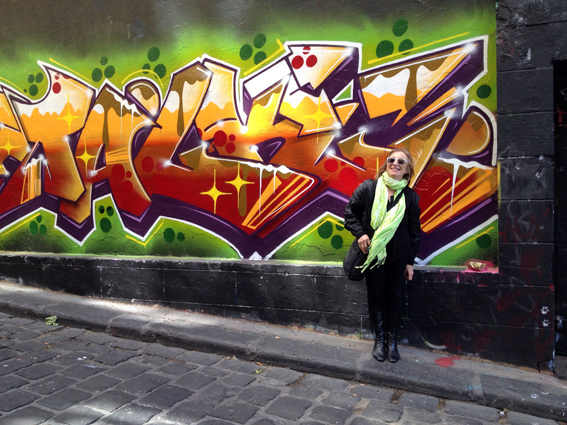
Co-curator Dianna Gold in Hosier Lane, Nov 2013. photograph © Carmel Wallace
